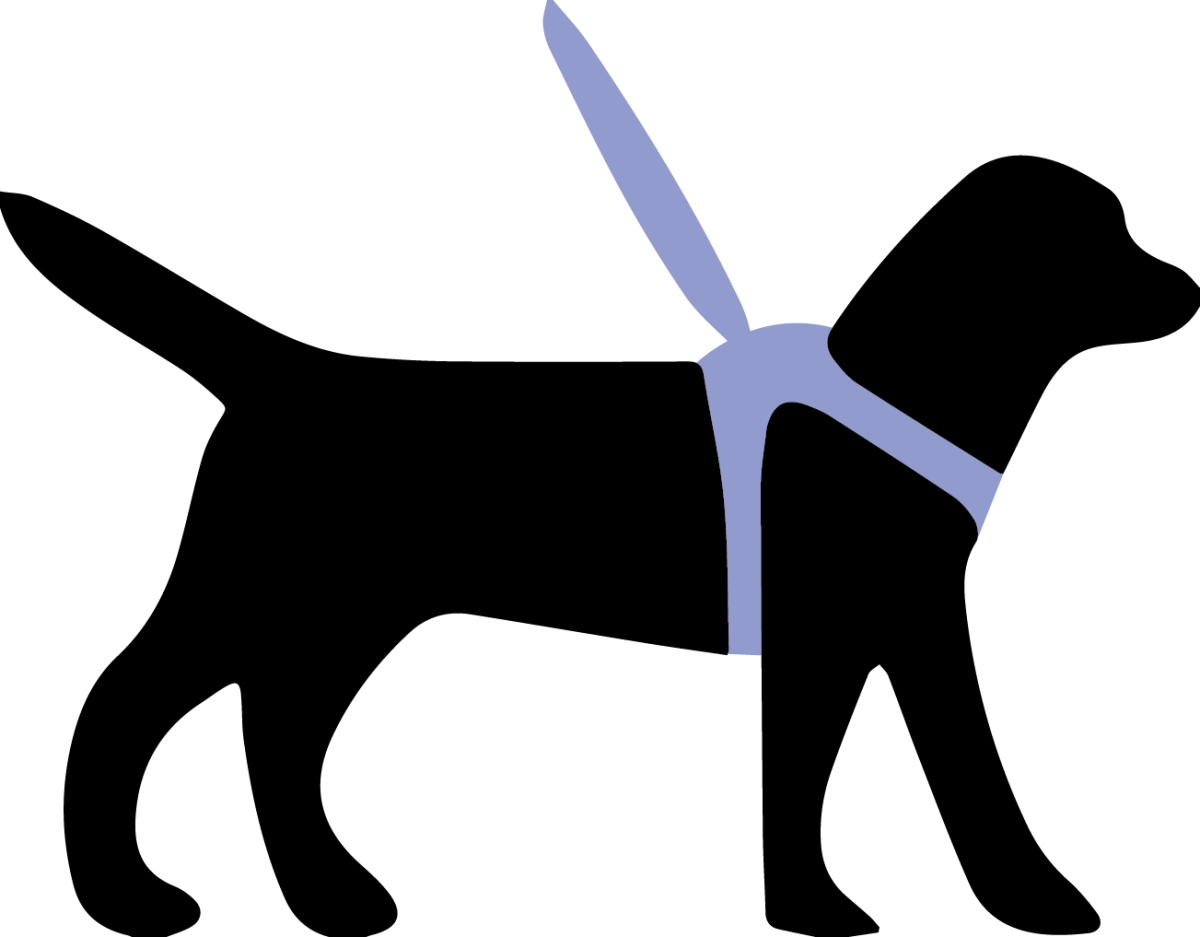
Graphic: Devan Feeney
Guide dog Harness
Guide dogs have a tough job. They’re responsible for helping their owner with their day-to-day actives and their overall wellbeing. However, in all of the responsibilities that these canines have, sometimes their own health can go unnoticed due to the attention their owners receive.
Sean Mealin, a graduate student studying computer science who is blind, and David Roberts, assistant professor in the Department of Computer Science, are developing a harness that will help handlers monitor the health of their dogs.
“When dogs communicate, they use visual cues and body language,” Mealin said. “Barking, which is what we most often associate with dogs, is actually the least expressive means of communication. Being blind, you miss a lot of those cues, like the angle of the head or the tail.”
The particular technology for monitoring the health of guide dogs is a specialized harness that will vibrate to alert handlers of changes in their dog’s heart rate or respiration. According to Roberts, they experimented with a couple of different ideas for how to alert its users.
“We experimented with audio, we experimented with haptic vibrotactile feedback, and the third that we have an interest in experimenting with is force tactile, so basically expansion and contraction,” Roberts said. “The reason we picked these is, in terms of haptics, those are the two main paradigms [vibrotactile and force tactile.]”
According to Roberts, they expected that audio would be difficult because people already use what he called the “audio channel” better known as audio cues. There was the concern that it would become overloaded so the two haptic options, which are not used as much as audio, were more noticeable.
“People habituate more quickly to persistent stimuli, but the heart and respiration are intermittent,” Roberts said. “The haptic signals have variance built in to avoid being persistent.”
According to Mealin, guide dogs typically work for a range of eight to 10 years. However some work for less than two and others work for up to 13. Roberts said that though there is no set standard for what happens when the dogs retire, it is not uncommon for them to be adopted by their handlers. The goal of this new technology is to increase the number of years a dog can spend working before it has to retire.
So far, the researchers have been working with the nonprofit, Guiding Eyes for the Blind, and use the technology on puppies who are training to be guide dogs. Mealin said they hope to branch out and work with clients, but they aren’t ready for that stage yet.
“The technology that we have can be miniaturized, and it’s our hope that it will be no bigger than a standard harness that the dogs have dealt with for their entire life, so it’s not an additional stress to use that technology for them,” Mealin said.
According to Mealin, what they are most interested in learning is whether the additional access to information about the dogs’ vitals, heart rate and respiration rate can give hints about how the dogs are doing in their training to become guide dogs.
Mealin said that each guide dog is very significant, so it is imperative to find early signs of a dog not being suitable for a guide-dog lifestyle, as well as imperative to find signs of health issues. With this new technology, Mealin and Roberts said they hope their new harness will be able to detect those problems.